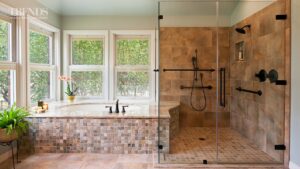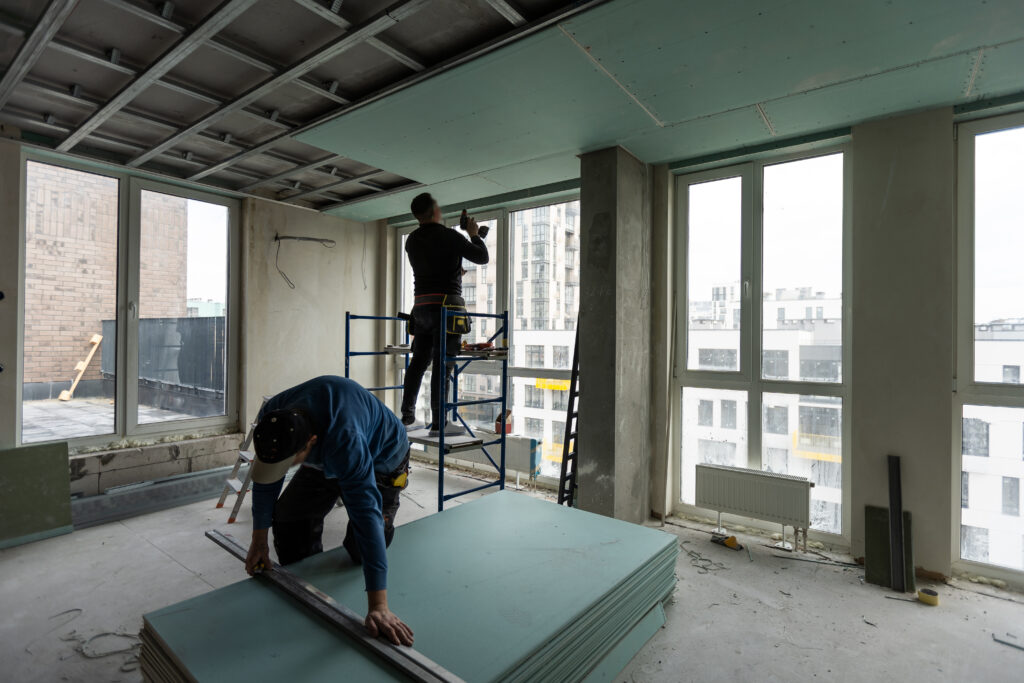Pool Fences Tampa are an essential layers of protection to help prevent unmonitored children or unaware adults from drowning. It’s also a good way to keep your backyard and pool private.

With the amount of work that goes into pool ownership, including balancing pH levels and cleaning up broken pool noodles, you don’t want to add another project to your to-do list. That’s why a removable fence is such a great option.
Wooden fences can offer privacy, safety and security to your pool area. They can also be aesthetically pleasing and blend in well with the surrounding landscape. They can either be painted to match your home or a natural color that catches the eye. They are typically less expensive than other types of fencing materials and can be easily repaired if necessary. However, they do have their downfalls including a lack of visibility around the area, making it difficult to keep an eye on children swimming.
One way to overcome this issue is to use a wooden fence that has horizontal slats instead of vertical ones. The space between the slats allows for more air flow without sacrificing privacy. Another option is to have your wooden fence topped with a lattice structure. The diagonal slats allow for a bit more visibility and add to the overall look of your pool fence.
Removable mesh fences are an additional safety measure that can help you meet your local and state’s pool fencing requirements. They are a great choice for homeowners who want to improve the aesthetic of their backyard and pool area without spending too much money on a fence. While they may provide added safety, they cannot be used as the primary pool fence for most residential homes.
When choosing a removable mesh fence, it’s important to keep in mind that you will need to periodically inspect it for any holes or wear and tear. This will ensure that it continues to offer the protection you need.
It’s also a good idea to check with your local city and state offices to find out what the minimum required height for your pool fence is. You should also make sure that your gate and doors are fitted with self-locking, child-proof locks that are out of reach from children. The gates should also open outward away from the pool so that children can’t use objects to climb over the fence.
If you are looking for a beautiful and durable alternative to traditional steel or iron fencing, consider a bamboo fence. While it’s not quite as sturdy as other materials, it is a great choice for homeowners who are looking for a more tropical style in their backyard pool. It’s also a good idea to choose a bamboo fence that is treated against termites and fungus.
Picket Fences
A picket fence provides a simple, classic look to any pool landscape and is one of the more affordable options. It pairs well with any color of pool lining and can complement lounge chairs around the pool. However, it may not be the best option for windy areas as it can cause damage to the fence and could potentially allow for escape from the pool area if someone climbs over the top.
For those who have a modern and contemporary style in mind, glass fencing is the way to go. Made of tempered safety glass, this style is sleek and offers an unobstructed view of the pool. Plus, it’s pet-proof and child-proof.
If you want a more traditional look, you can use an iron fence to create a classic white picket style. Wrought iron is a durable material that can stand up to years of weathering. However, you’ll need to stay on top of maintenance to ensure it does not rust or develop cracks.
Another metal option is tubular steel, which can be more affordable than wrought iron. However, it is not as durable and can start to rust quickly.
A concrete half wall is a solid option for those who want to protect their pools from kids and pets but are looking for an attractive alternative to standard chain-link fences. Plus, you can customize the appearance by adding decorative tiles or paint to the concrete.
There are a lot of options when it comes to pool fences, but it’s important to make sure you choose one that complies with local fencing requirements and keeps your guests and family members safe. Check with your municipality to find out the requirements.
Remember to keep in mind that your pool fence must be a minimum of 4 feet high, with gates that open outward and are self-closing and self-latching. Also, your fence must not be climbable and have less than 4 inches between the rails and a latch at least 54″ above the bottom rail. You can meet these requirements by choosing a 3 rail fence with a drop rail or a flat top rail or a vertical picket.
Concrete Half Walls
If you are looking for an alternative to the traditional wooden fence around your pool, consider concrete half walls. These structures are not only effective in keeping kids and pets out of the pool, but they can also be very decorative. They are also easy to install and require very little maintenance. However, before you decide to build a concrete fence around your pool, it is important to understand the safety issues associated with this type of structure.
Depending on your location, your local government may require you to have a safety fence around your pool. While these fences are not as pretty as other types of pool fencing, they are effective at preventing accidents and deaths. In addition, these fences can be customized to suit your tastes and the needs of your family. You can choose from different colors, heights, and gates. Some options include self-closing gates, which can be locked to prevent children from accidentally opening them.
Some municipalities require you to have a pool fence in order to be eligible for homeowner’s insurance. In these cases, you may need to hire a professional to get the job done. However, if you have some basic tools and building skills, you can do the work yourself. This is not the most difficult construction job, but it’s certainly not for beginners.
Another great option is a mesh fence. These fences are made of a tough, durable material that is almost impossible to penetrate or break. These fences are often used for pools in parks and other public areas, as they provide an extra layer of protection for children and adults. You can find these fences at most hardware stores and home improvement centers.
You can also make your own pool fence by using steel wire and chain link. These fences are strong and durable, and they can be adjusted to fit the shape of your pool. They are also lightweight, which makes them easier to install and remove.
If you’re not sure how to install a pool fence, you can check out this video guide from YouTube. The video guide is not too long, and it explains the entire process step by step. It’s also worth mentioning that you should always use caution when working with any kind of construction project, and it’s best to consult a professional if you’re not a competent builder.
Lattice Fences
Lattice fences can be an ideal option if you’re looking for a way to add some privacy while keeping your pool area visually accessible. They’re also perfect for those who want to create a more unique, design-forward fence that can really make your backyard feel like an oasis. Lattice fences rely on their crisscross pattern to obstruct views into the pool area, which can give you a sense of secluded privacy without blocking all of your beautiful view.
Compared to other solid fence options, lattice fences are relatively budget-friendly, especially when they’re constructed with pre-made panels. They’re also easy to install and can be a great DIY project for those who don’t have a lot of building experience. Lattice fences are durable and long-lasting, making them a great choice for those who want a simple pool fence that will last for years to come.
Wood lattice fences offer a natural, classic look that can complement any landscape design, and they’re a good option if you want to maintain the visibility of your pool while providing some extra privacy. Depending on the type of wood you use, it’s possible to stain your wooden fence for added beauty and protection from sun exposure. However, be sure to keep in mind that wooden fences will require more upkeep than other types of fences, including regular cleaning and staining.
If you’re interested in adding more privacy to your swimming pool area, it’s worth considering adding some plants to the landscaping. Evergreen trees are a popular choice, but you can also consider other tropical options like palms or fruit trees to match your backyard’s aesthetic. Just remember that any trees you plant will increase the amount of maintenance you’ll have to do around your pool, since they’ll need watering and trimming on a regular basis.


